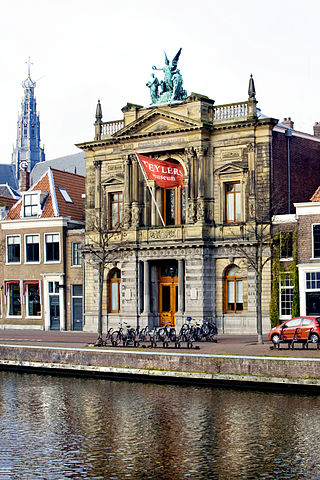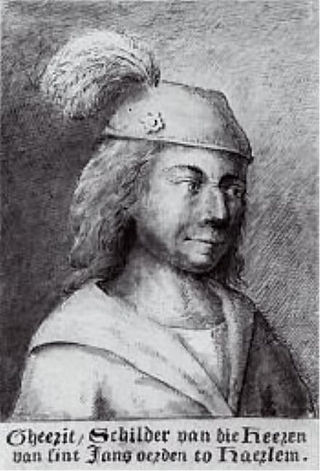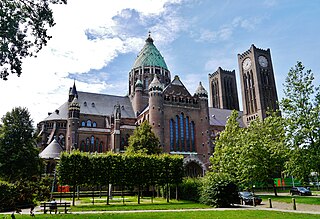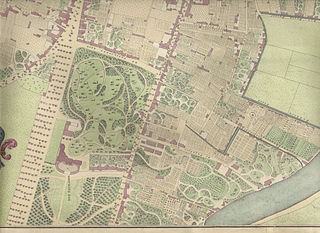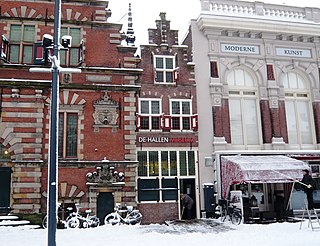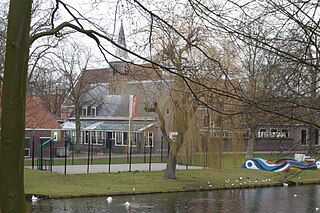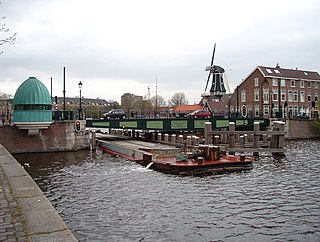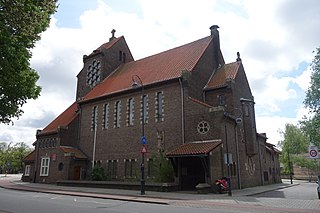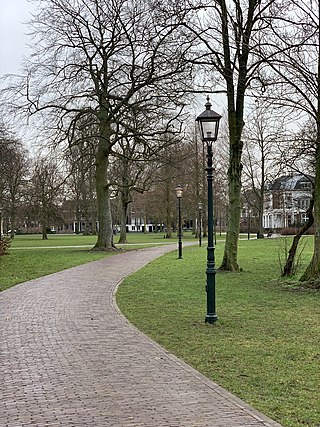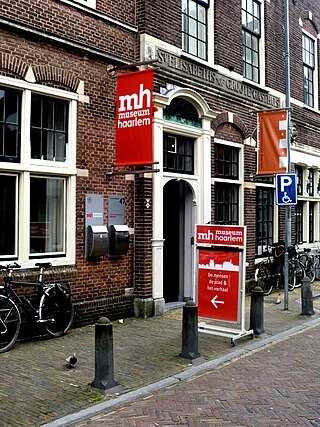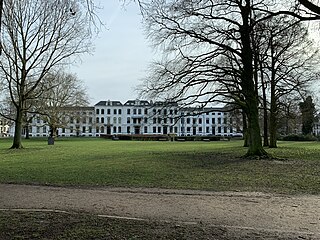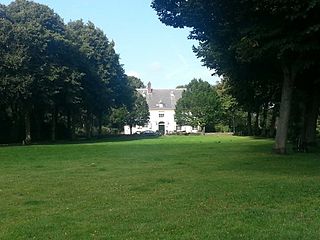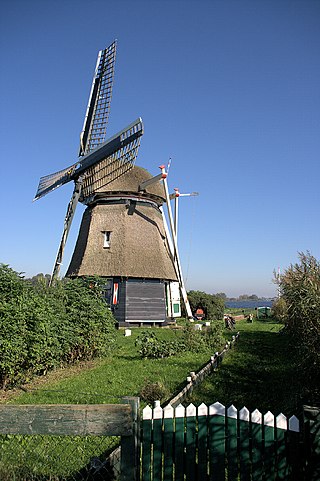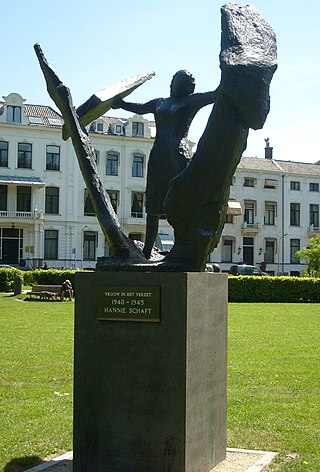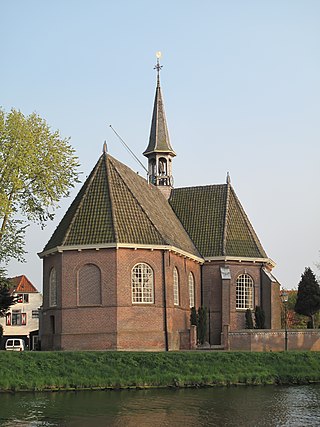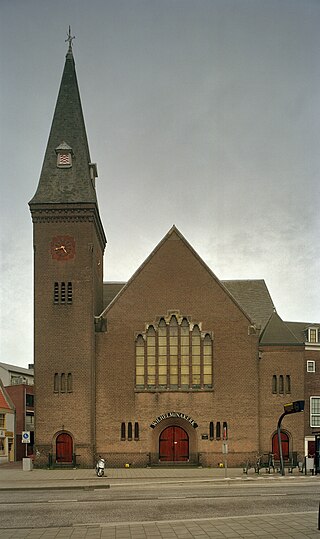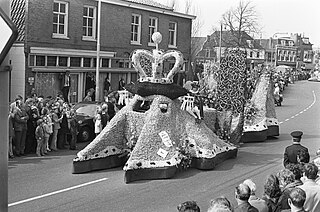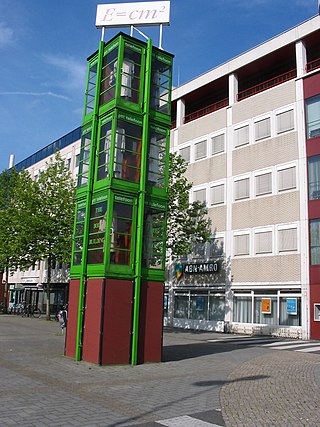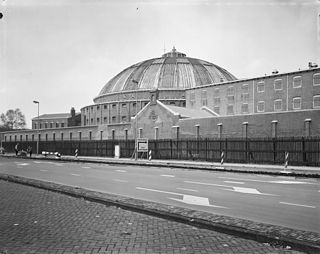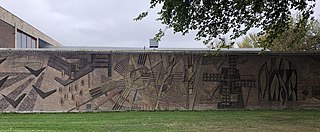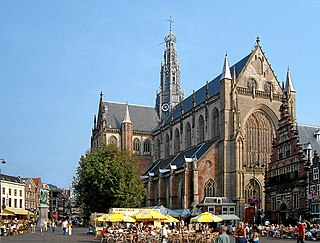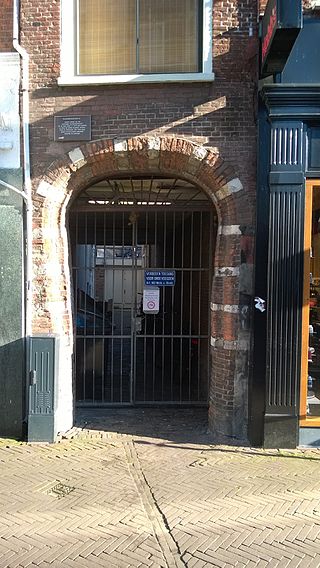30 Sights in Haarlem, Netherlands (with Map and Images)
Legend
Welcome to your journey through the most beautiful sights in Haarlem, Netherlands! Whether you want to discover the city's historical treasures or experience its modern highlights, you'll find everything your heart desires here. Be inspired by our selection and plan your unforgettable adventure in Haarlem. Dive into the diversity of this fascinating city and discover everything it has to offer.
Sightseeing Tours in HaarlemActivities in Haarlem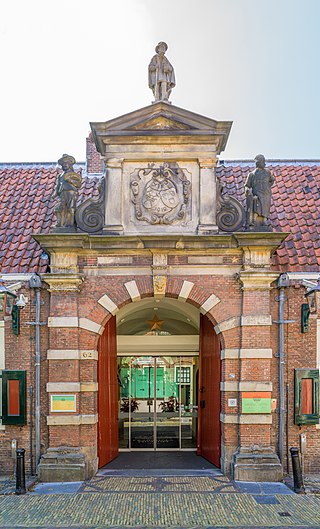
The Frans Hals Museum is a museum in the North Holland city of Haarlem, the Netherlands, founded in 1862, known as the Art Museum of Haarlem. Its collection is based on the city's own rich collection, built up from the 16th century onwards. The museum owns hundreds of paintings, including more than a dozen by Frans Hals, to whom the museum owes its name. The Frans Hals Museum has two historic locations in Haarlem city centre: the main location on Groot Heiligland and Location Hal on Grote Markt, composed of the adjacent 17th-century Vleeshal and 19th-century Verweyhal. On Groot Heiligland is the 17th-century Oudemannenhuis with regent's rooms. It houses the famous paintings by Frans Hals and other ancient, modern and contemporary art, as well as the museum café. Location Hal regularly hosts exhibitions of modern and contemporary art.
De Adriaan is a windmill in the Netherlands that burnt down in 1932 and was rebuilt in 2002. The original windmill dates from 1779 and the mill has been a distinctive part of the skyline of Haarlem for centuries.
Teylers Museum is an art, natural history, and science museum in Haarlem, Netherlands. Established in 1778, Teylers Museum was founded as a centre for contemporary art and science. The historic centre of the museum is the neoclassical Oval Room (1784), which was built behind the house of Pieter Teyler van der Hulst (1702–1778), the so-called Fundatiehuis. Pieter Teyler was a wealthy cloth merchant and banker of Scottish descent, who bequeathed his fortune for the advancement of religion, art, and science. He was a Mennonite and follower of the Scottish Enlightenment.
4. Jansridder
Geertgen tot Sint Jans, also known as Geertgen van Haarlem, Gerrit Gerritsz, Gheertgen, Geerrit, Gheerrit, or any other diminutive form of Gerald, was an Early Netherlandish painter from the northern Low Countries in the Holy Roman Empire. No contemporary documentation of his life has been traced, and the earliest published account of his life and work is from 1604, in Karel van Mander's Schilder-boeck.
5. Koepelkathedraal Sint Bavo
The Cathedral of Saint Bavo is a cathedral in Haarlem, the Netherlands, built by Joseph Cuypers from 1895 to 1930 to replace the former waterstaatskerk in the Jansstraat called the St. Joseph. That church was itself a replacement for the Sint-Bavokerk, that had been converted to Protestantism from Catholicism in 1578. The Cathedral of Saint Bavo now serves as the main cathedral for the Roman Catholic Diocese of Haarlem-Amsterdam. Within the cathedral, the former sacristy has been converted into a small museum (schatkamer) containing historical artefacts from Haarlem's Catholic past.
6. Paviljoen Welgelegen
Villa Welgelegen is a historical building in Haarlem, the Netherlands, which currently houses the offices of the provincial executives of North Holland. Located at the north end of a public park in the city, it is an example of neoclassical architecture, designed by Abraham van der Hart and unusual for its style in the Netherlands.
7. Frans Hals Museum Hal
Frans Hals Museum - Hal is one of the two locations of the Frans Hals Museum, located on the Grote Markt, Haarlem, Netherlands, where modern and contemporary art is on display in alternating presentations. The emphasis is on contemporary photograph and video presentations, with the focus on Man and society.
8. Museum van de Geest/Het Dolhuys
Museum van de Geest was created in 2020 when Het Dolhuys, the national museum for psychiatry in Haarlem, the Netherlands, merged with the Outsider Art Museum from Amsterdam. Het Dolhuys had been founded in 2005 in the newly renovated former old-age home known as Schoterburcht, located just across the Schotersingel from the Staten Bolwerk park.
9. Corrie ten Boom Museum
The Ten Boom Museum is a museum in Haarlem, the Netherlands, dedicated to The Hiding Place, the subject of a book by Corrie ten Boom. The house where the museum is located was purchased and restored in 1983 by the Corrie ten Boom Fellowship, a non-profit 501(c)(3) corporation governed by a board of directors. Mike Evans serves as the chairman of the Board.
10. Catharijnebrug
The Catharijne Bridge is a swing bridge in the center of the Dutch city of Haarlem. The bridge was built between 1902 and 1903 and was designated a national monument on 27 July 1999. The bridge connects the Koudenhorn with the new road over the Papentorenvest that was built in the same period. The bridge was designed by municipal architect Jacques Leijh.
11. Oud-Katholieke Kerk
The H.H. Anna and Maria Cathedral is the cathedral of the Old Catholic diocese of Haarlem at Kinderhuissingel 78, in the Garenkokerskwartier. The building has been designated as a national monument because of the Künckel organ, the municipality of Haarlem has given the building the status of municipal monument.
12. Frederikspark
The Frederikspark is a city park in the Dutch city of Haarlem. The park is located in the Haarlemmerhoutkwartier district and is bordered on the north side by the Baan, on the east by the Kleine Houtweg, on the south by the Paviljoenslaan and the garden of the provincial government building and on the west by the Dreef.
13. Museum Haarlem
Museum Haarlem is a city museum on Groot Heiligland 47, Haarlem, Netherlands, located across the street from the Frans Hals Museum. It shares its front door with the ABC Architectuurcentrum Haarlem, which is located next door. The museum is devoted to presenting and preserving the cultural history of Haarlem and the surrounding region.
14. Haarlemmerhout
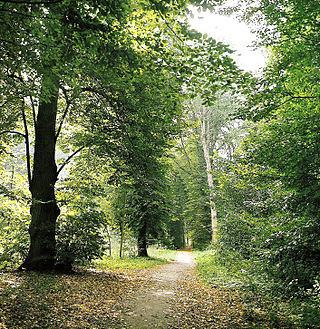
The Haarlemmerhout is the oldest public park of the Netherlands. It lies on the south side of Haarlem, on the same old sandy sea wall that is shared by the public park Haagse Bos in The Hague and the Alkmaarderhout in Alkmaar.
15. Kenaupark
The Kenaupark is a park in the center of the Dutch city of Haarlem. It is part of the stronghold in the defenses around the old city. The park was designed in 1865 by Jan David Zocher. It is named after Kenau Simonsdochter Hasselaer, because of her alleged role in the Siege of Haarlem (1572-1573).
16. Zaanenpark
The Zaanenpark is a park in the Haarlem-Noord district of the North Holland city of Haarlem. It used to be part of the seigniory of Zaanen. In addition to Huis te Zaanen, there is a community center, a playground and a skating rink in the park.
17. Vredestempel
The Peace Temple in Haarlem is a monument in the shape of a Roman temple built in 1648 on the occasion of the Peace of Münster. The building is located in the Hortus Medicus and is located right behind the former guest houses of the town hall. The colonnade was built on the occasion of the conclusion of the Peace of Westphalia, but mainly because of the Peace of Münster, which is part of the Peace of Westphalia. It has been designated as a national monument as part of the boundary of the Hortus Medicus.
18. De Hommel
The Kleine Molen or De Hommel is a polder mill built in 1879 at Hommeldijk 20 in Haarlem. The Hommel drained the Vereenigde Groote and Kleine polders. The mill is a thatched octagonal mill of the ground sailer type with an Old Dutch sails. It is equipped with an auger, which was used to drain the polder until 1944. In that year, the polder was flooded by order of the German occupying forces. After the war, the Kleine Molen became the housing for an electric pumping station. In 1963/4 the mill was refurbished, but on 31 March 1967 lightning struck and the mill burned down. In 1972 and 1991 the mill was restored, with the charred wooden octagon largely preserved.
19. Hannie Schaft
Woman in the Resistance is a monument in memory of Hannie Schaft in the Kenaupark in the Dutch city of Haarlem. The bronze statue was made by Truus Menger-Oversteegen, her friend and fellow resistance fighter during the war. Commemoration of the communist Hannie Schaft met with resistance in the 1950s and the statue was only realized in 1982.
20. Oude Kerk
The Oude Kerk is a Dutch Reformed Church that is located at Kerkplein 3 in Spaarndam. It is a brick building with an elongated floor plan. The church is used for church services, concerts and weddings.
21. Archeologisch Museum Haarlem
The Archeologisch Museum Haarlem is a museum in the cellar of the Vleeshal on the Grote Markt in Haarlem, the Netherlands, dedicated to promoting interest and conserving the archeological heritage of Kennemerland.
22. Wilhelminakerk
The Wilhelmina Church in Haarlem is located in the center of the city on the Gedempte Oude Gracht. The church building was designed by Arie de Maaker and built just after the First World War. The church was inaugurated on August 31, 1921 (Queen's Day).
23. Het Bloemenmeisje
Bloemencorso Bollenstreek is one of the flower parades in the Netherlands and one of the largest editions of the world. The event takes place in the end of April, The route starts on Saturday in Noordwijk and ends in the city of Haarlem the day after.
24. The Body Building
The Body Building is a work of art on the Houtplein in Haarlem that has stood on the southeast side of the square since 1990, in front of the ABN-AMRO office. After the restructuring of the southern part of the Houtplein and its surroundings in 2023, the telephone booth was placed back on the other side of the square on the southwest side that year.
25. De Koepel
The Koepelgevangenis is a former prison in Haarlem, Netherlands. It is one of three Panopticon-style buildings situated in the country. One of three designed by Willem Metzelaar, the building was completed in 1901. A Rijksmonument, the prison closed in 2016. After the prison's closure, the building, along with the one at Arnhem, was used to house asylum seekers to the Netherlands.
26. ODE AAN DE BAKKER
Ode to the Baker is a wall relief on the Krugerkade in the Dutch municipality of Haarlem made by Levinus Tollenaar. The relief was applied to the outer wall of their former bread factory in 1963 by order of Vermaat's Bakeries.
27. Bakenesserkerk
The Bakenesserkerk is a former church and seat of the local archeological workgroup in Haarlem, Netherlands, on the Vrouwestraat 10. Its characteristic white tower can be seen in cityscapes of Haarlem. The entrance is opposite the rear entrance to the Teylers Hofje.
28. PHIL Haarlem
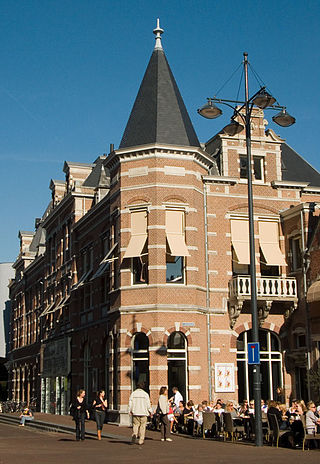
PHIL Haarlem, formerly known as the Philharmonie, is a music house in Haarlem, the Netherlands. The PHIL is located on the corner of Klokhuisplein and Lange Begijnestraat in the city centre. Until 2001, the building was known as the Concertgebouw.
29. Grote of St. Bavokerk
The Grote or Sint-Bavokerk is a late medieval church building in the Dutch city of Haarlem, located on the Grote Markt. Until the Reformation, it was dedicated to Saint Bavo. The medieval cruciform church, which stands in the middle of the old center of the city, was built in the Brabant Gothic architectural style. On the cross of the transept and nave is a 78-metre-high wooden crossing tower covered with lead, late Gothic crossing tower. The church belongs to the 'Top 100 of the National Monument Conservation Agency' from 1990.
30. Guldenbergspoortje
The Guldenbergspoort at Grote Houtstraat 9 in Haarlem was the entrance gate to the former Carmelite monastery, which existed from 1249 to 1578. The monastery complex largely covered an area the size of the block of houses bordered by the Grote Houtstraat, the Anegang, the Warmoesstraat and the Spekstraat. On the corner of the Spekstraat and the Warmoesstraat stood the "Oude Vleeschhal", which was not part of the monastery complex.
Share
How likely are you to recommend us?
Disclaimer Please be aware of your surroundings and do not enter private property. We are not liable for any damages that occur during the tours.

